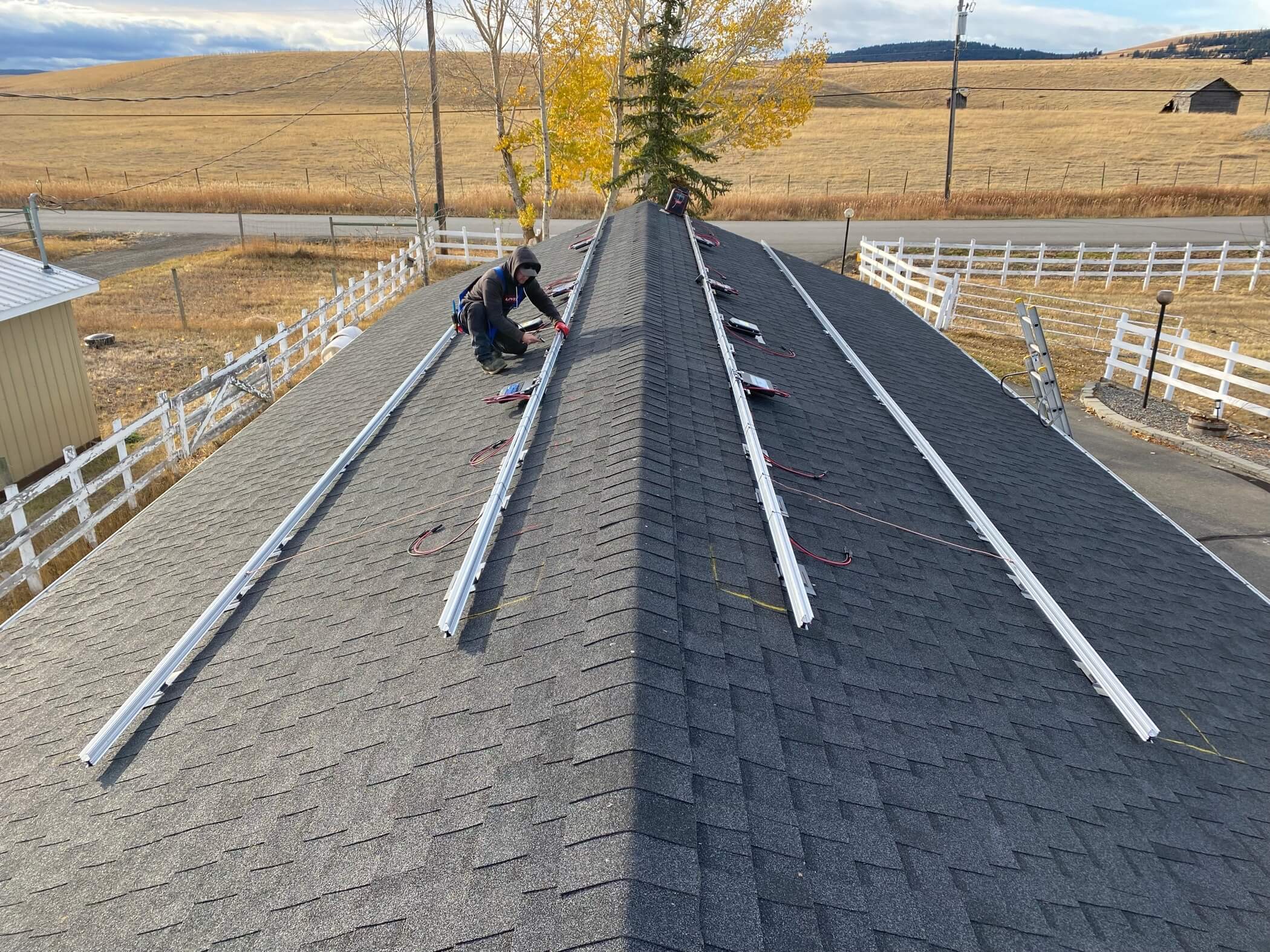General Considerations For Various PV Mounting Approaches
Photovoltaic, or PV, mounting systems are used for attaching solar panels to a roof, the ground, the side of a building, or anywhere else you might need to fix these energy sources. Riverside Energy Systems (from Kamloops) has been using these structures since 1995 to install solar panel arrays throughout British Columbia. If you want off-grid power but don't know what options might be available to you in your unique area, then here for your consideration are 5 methods we use.
Fixed Ground Mounting
Ground mounting is nicely suited to sites where unobstructed sun exposure is available without needing to place panels on a roof top. The solar array is easily kept free of snow and dust throughout the year. This mounting method can also be adapted to a flat or low pitch roof.

Fixed Roof Mounting
Fixed roof mounting has all the advantages of fixed ground mounting but with reduced ease of maintenance traded off against immunity to tampering and/or vandalism. One additional issue is the possible need for roof penetrations to accommodate mounting hardware.

There are a number of ballasted mounting systems available that make it possible to avoid roof penetrations or at least keep them to a minimum. Ballasted systems typically use concrete blocks to keep the modules and racking in place.

Modules can also be attached securely to metal roofing. Metal roof penetrations can be repaired more easily than tar and gravel, or membrane roofs. There are several vendors now producing mounting hardware specific to corrugated metal roofing that minimizes or avoids penetrations altogether.

PV composite film products are also available intended for direct mounting to metal roofing, walls, and other relatively smooth surfaces. These products are best used with south facing surfaces to maximize harvest.

Wall Mounting
South facing building walls can be taken advantage of as module mounting surfaces. Modules arrays can be parallel to the wall, tilted away from the wall, or configured as an overhanging canopy.

Tracked Mounting
Using a tracker can increase array energy harvest 25% – 40% over fixed mounting. Trackers can be ground or roof mounted. When ground mounted, the tracking hardware can add 15% – 20% to the cost of a project over fixed mounting hardware. Since roof top installations require more engineering and labour to complete, the system cost differential between tracked and fixed related to mounting method alone will be smaller still.

Top Of Pole Mounts
Top of pole mounting is another fixed array mounting method. Arrays remain stationary even through the arrangement looks similar to a tracker. Top of pole mounts often allow for seasonal tilt adjustments which may help to optimize harvests particularly during winter conditions.

Contact Riverside today for your solar installation needs.









